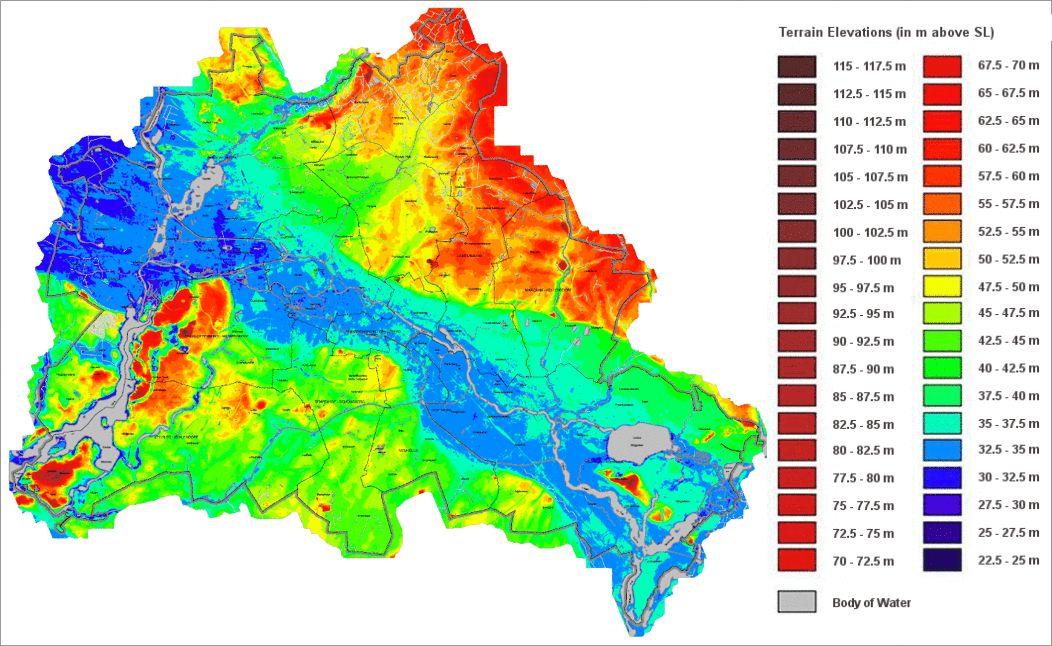The maps present the total precipitation averaged over the period from 1981 to 2010 according to water years (hydrological years, discharge years). A water year ends in October of the year in its title; it begins, however, in November of the year prior to that. The evaluations for the water years from 1981 to 2010 thus refer to the period from November 1980 to October 2010.
In addition, the totals for the winter and summer halves of the water year are also presented. Table 1 displays the evaluation periods.
| Tab. 1: Evaluation periods for the long-term mean precipitation distribution, 1981-2010 | |||
| Map | Evaluation period | Month | Period |
|---|---|---|---|
| 04.08.1 | Annual precipitation | November – October | Nov. 1980 – Oct. 2010 |
| 04.08.2 | Summer half | May – October | May 1981 – Oct. 2010 |
| 04.08.3 | Winter half | November – May | Nov. 1980 – May 2010 |
For the period from 1981 to 2010, Berlin’s mean annual precipitation ranges between 543 mm and 625 mm, depending on the location. The mean precipitation for the urban area is 580 mm/a (cf. Table 2). Precipitation in the Grunewald area (575-605 mm) and on the Teltow (590-620 mm) and the Barnim plateaus (575-605 mm) are above average for the most part. In the Berlin glacial valley, which extends from the southeast to the northwest (545-575 mm), on the other hand, precipitation is below average, sometimes even dramatically so (Map 4.08.1).
Overall, similar characteristics have been observed for the summer half (Map 04.08.2) and the winter half (Map 04.08.3) of the year, albeit less pronounced. Especially in the winter half, the spatial variance is noticeably decreased. In the summer half, with an average of 322 mm, the mean precipitation is distinctly higher than in the winter half with an average of 259 mm.
A correlation may be derived between the wind direction distribution predominant in the Berlin area and the influence of the city’s topography.
Figure 3 (SenUVK 2019) presents the mean wind direction distribution at the DWD station in Berlin-Tempelhof for all four seasons, differentiated by wind speed. Westerly winds of maritime and sometimes humid air occur frequently throughout the year. During the winter months, the influence of continental, often dry currents moving from the south to the east increases.


